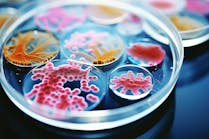WHO releases report on state of development of antibacterials
The World Health Organization (WHO) released its latest report on antibacterial agents, including antibiotics, in clinical and preclinical development worldwide.
Although the number of antibacterial agents in the clinical pipeline increased from 80 in 2021 to 97 in 2023, there is a pressing need for new, innovative agents for serious infections and to replace those becoming ineffective due to widespread use.
First released in 2017, this annual report evaluates whether the current research and development (R&D) pipeline properly addresses infections caused by the drug-resistant bacteria most threatening to human health, as detailed in the 2024 WHO bacterial priority pathogen list (BPPL). Both documents aim to steer antibacterial R&D to better counter the ever-growing threat of antimicrobial resistance (AMR).
Not only are there too few antibacterials in the pipeline, given how long is needed for R&D and the likelihood of failure, there is also not enough innovation. Of the 32 antibiotics under development to address BPPL infections, only 12 can be considered innovative. Furthermore, just 4 of these 12 are active against at least 1 WHO ‘critical’ pathogen – critical being the BPPL’s top risk category, over ‘high’ and ‘medium’ priority. There are gaps across the entire pipeline, including in products for children, oral formulations more convenient for outpatients, and agents to tackle rising drug resistance.
Encouragingly, non-traditional biological agents, such as bacteriophages, antibodies, anti-virulence agents, immune-modulating agents and microbiome-modulating agents, are increasingly being explored as complements and alternatives to antibiotics. However, studying and regulating non-traditional agents is not straightforward. Further efforts are needed to facilitate clinical studies and assessments of these products, to help determine when and how to use these agents clinically.
Looking at newly approved antibacterials, since 1 July 2017, 13 new antibiotics have obtained marketing authorization but only 2 represent a new chemical class and can be termed innovative, underscoring the scientific and technical challenge in discovering novel antibacterials that are both effective against bacteria and safe for humans.
In addition, 3 non-traditional agents have been authorized, all are fecal-based products for restoring the gut microbiota, to prevent recurrent Clostridioides difficile infection (CDI) following antibiotic treatment in adults.
The preclinical pipeline is active and innovative, with many non-traditional approaches, as part of a stable number of preclinical candidates over the last 4 years. Its focus remains Gram-negative pathogens, which are resistant to last-resort antibiotics. Gram-negative bacteria have built-in abilities to find new ways to resist treatment and can pass along genetic material that allows other bacteria to become drug resistant as well.
The shift towards antibacterial agents targeting a single pathogen appears to have plateaued. Agents targeting a single pathogen increase the need for widely available and affordably priced rapid diagnostics, to ensure the relevant bacteria are present in the infections to be treated.
Greater transparency in the pipeline would: facilitate collaboration around potentially innovative but challenging projects, help scientists and drug developers, and generate more interest and funding for drug development for novel antibacterial agents.





